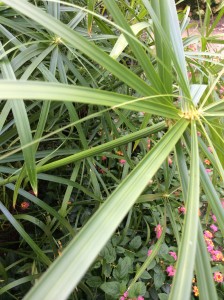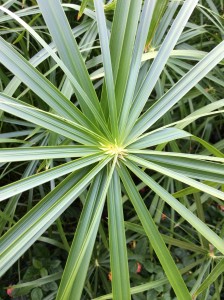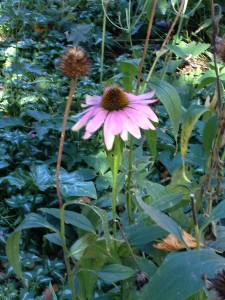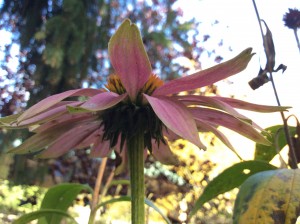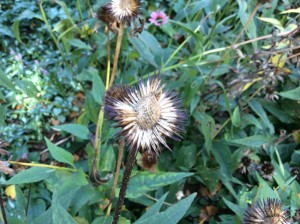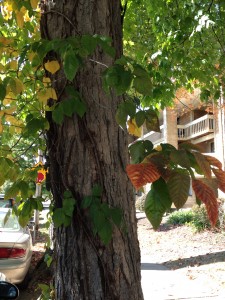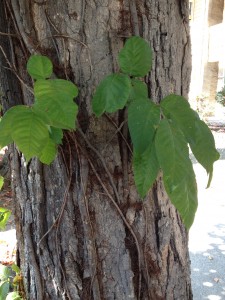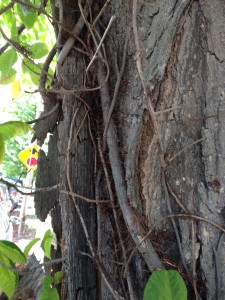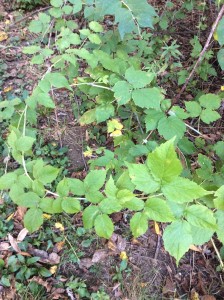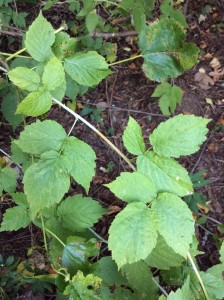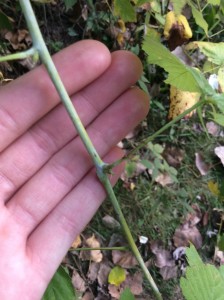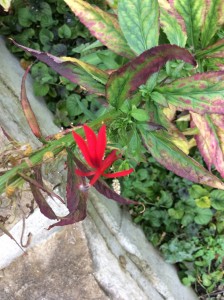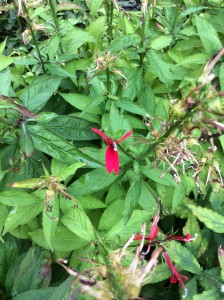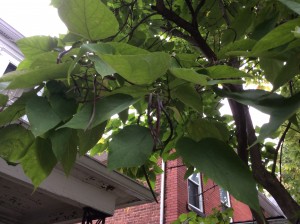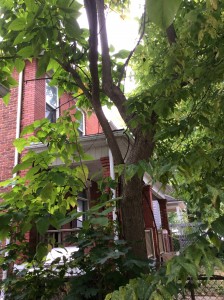Find plants in a specific family:
Cyperaceae, the sedge family
Cyperus sp.
Found outside of the Agricultural Administration Building on The Ohio State University’s campus (2120 Fyffe Rd., Columbus, OH 43210). I determined that this plant was of the Cyperaceae family because it was an herb that was grass-like in aspect, but with a solid stem with edges. The leaves were parallel veined and elongate. The plant had flowers arranged on the axis of one of the spikes.
Asteraceae, the aster family
Echinaceae purpurea
Found outside of Kottman Hall on The Ohio State University’s campus (2021 Coffey Rd., Columbus, OH 43210). I determined that this plant was in the Asteraceae family because it was an herbaceous plant with capitulum inflorescence. The capitulum was subtended by an involucre bract (phyllaries). The disk flowers were in a conic shape and surrounded by purple ray flowers. The fruit was also in the form of an indehiscent achene.
Find plants that are on the sight ID list:
Toxicodendron radicans
Found near the corner of W 9th Ave. and Highland Ave. in Columbus, Ohio (43201) growing on Acer saccharum. I knew this plant was poison ivy because it was growing in the form of a woody vine with abundant aerial roots. The leaflets were in groups of three, and some of the leaflets had pointed teeth or shallow lobes.
Rubus sp.
Found at the Wilma H. Schiermeier Olentangy River Wetland Research Park (352 W Dodridge St., Columbus, OH 43202) growing next to a walking path. I knew this plant was Rubus sp. because it was growing in the form of an arching shrub, was covered in a glaucous bloom, and was very prickly. It had compound leaves with irregularly serrate leaflets in groups of three. The plant was also arching and rooting at the tip.
Find specific characters of plants:
A plant with zygomorphic flowers.
Lobelia cardinalis
Found outside of Jennings Hall (1735 Neil Ave., Columbus, OH 43210) in the planted gardens. Zygomorphic flowers can be identified by their bilateral symmetry, meaning they are only symmetric across one plane.
A plant that produces capsules.
Catalpa speciosa
Found near the intersection of W Maynard Ave. and Williams St. in Columbus, OH (43201) planted next to the street. Capsules are a type of dehiscent fruit that split open along multiple sides of the fruit when mature.

